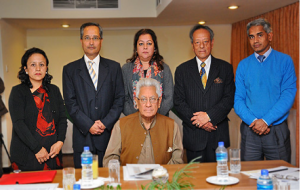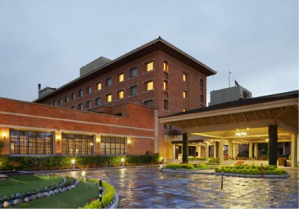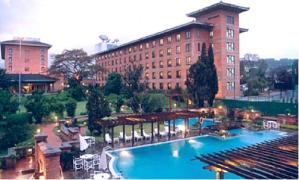Blog 5: My Vision on Leadership
Blog 5: My Vision on Leadership
Figure 1. My Vision of Leadership
Source: Articles 3, 2014
I believe that leadership is a process of leading people, based on adaptation, acceptance and collaborative decision-making. Yukl (2008) suggested that “research on leadership and management during the past several decades provide strong evidence that flexible, adaptive leadership is essential for most managers”. It is further supported by Jacobs and Jaques (1987) and even McCall and Sergrist (1980) that there is no single method of leadership that is effective on all, and that is precisely why flexible leadership is ultimately the best leadership technique, based on my opinion. I am aware that leadership to become flexible, is not easy since it requires knowledge, skills and the awareness of the context. Situation leadership, will be the closest type of leadership that I believe is most suited for the present day world. Situation leadership is an adaptation of two leadership behaviors, that is directive behavior and supportive behavior and comes in 4 styles: Directing, coaching, supporting and delegating (Kearney and Gebert, 2009; Shen et al., 2009; Deshpande, 2014; Beyond Theory, 2015: See figure 2 below).
Figure 2. Situational Leadership
Source: University of Phoenix, 2015
As stated by Jayanti (2013), who has a website demonstrating the importance of trust, suggested that a leader should be capable of winning the trust of the people that are around him/her. It is trust and respect that can create a good sense of following amongst the followers. Therefore, when visioning a leader, it is not entirely up to being flexible, that is from coaching to directing or delegating to supporting, but also having the charisma (Kotlyar and Karkowsky, 2007; Russell, 2013), that is needed to win the trust. Personality, plays a crucial role here (Kotler, 2008, Kotler, 1990). As stated by one of the popular owners in Thailand of a television company and hotel group – Direct TV PCL, suggested that from having no money to being rich has not changed his lifestyle. He said that, even now, I come to work at 7.00 in the morning and leave at 22.00. It is the impression that even the leader is willing to put some effort, apart from simply delegating and directing. Setting an example, and the daily behaviors build up the individual’s personality, which can be reflected amongst the followers. This individual, was the inspiration since day one. Due to the opportunity that I have got to interview him during the exhibition in Thailand, gave me the impression how a leader should be. He should not be someone demonstrating wealth and power, but a humble individual, with vast knowledge, minimal ego and the ability to accept opinions. As stated by Quin, Spreitzer and Hart (1992) that a leader has several attributes that must be integrated in order to gain effectiveness, and that there is no single attribute that can outweigh others.
As part of understanding and envisioning leadership, I conducted a minor primary research on how my colleagues view myself, in terms of the various attributes that I have, do not have and might need. It was concluded that as part of my personal development, I need to focus on my ability to communicate more openly. Since I have always been the type of person who does not engage directly with anything, this has happened to be my weakness. I wish to create a new self by the end of the year 2016, allowing to be ready to enter the tourism and hotel industry as a person with charisma, a strong personality and knowledge to understand and evaluate things better. As a result, I believe that there are various skills that wish to develop over the course of time. A part from my individual’s skills and attributes that I have stated above, I also wish to create a strong significance in terms of being the upcoming 21st century leader. In order to do so, I believe that I should be more of a listener and less of a talker, followed by the ability to understand the opinions of people, take them into consideration and most importantly, have the confidence to direct people. I believe that in the hospitality and tourism industry, it is ultimately very important to be the people’s person as it is all about customer service. A good example can be noted between the quality of service of Hilton Pattaya compared to the quality of service located amongst the underlying, lower-level hotels.
I do not wish to be a dictator or an autocratic leader, as it has no space in the present world. I prefer a leader that is democratic, and listens to the voices of people. As stated by Mumford, Campion and Morgeson (2007) and Mullins (2013), that a leaders skill can vary from one position to another. In a board meeting, a leader might appear and perform differently, than what he or she might do while having a one on one conversation with a staff. Building personality and developing relationships are vital to exist in this competitive world. Mayer and Salovey (1995) suggested that a leader should be able to control his or her emotions and portray it in a constructive manner that does not deviate organizational objectives, but rather enforce it.
In conclusion, I envision a leader that can be explained in the following terms: charismatic, flexible, knowledgeable, listener and democratic. These are the types of attributes that a leader should have, and it should be within the best interest of the context, to decide on how many levels should one attribute be focused than the other. For example, in a situation of crisis, a leader should be knowledgeable and democratic to gain the best option for survival. However, in the context where the organization is performing very well, then the leader should focus more on listening, and charismatic, in order to continue motivating the followers to perform better.
References
Articles3 (2014). Charismatic Leadership the prerequisites. [Online]. Available at: http://articles9.com/en/articles/charismatic-leadership-the-prerequisites/ [11th September 2015]
Beyond Theory (2015). Situational Leadership training. [Online]. Available at: http://beyondtheory.co.uk/situational-leadership/ [11th September 2015]
Deshpande, A. (2014). A comparative study of workforce diversity in service and manufacturing sectors in India. International Journal of Research In Business Management, 2(3), 1 – 8.
Jacobs, T. O., & Jaques, E. (1987). Leadership in complex systems. In J. Zeidner (Ed.), Human productivity enhancement: Organizations, personnel, and decision making, 2, 7–65.
Jayanti (2013). About the Trust. Jayanti Memorial Trust. [Online]. Available at: http://www.jmt.org.np/members_and_advisors.html [11th September 2015]
Kearney, E. and Gebert, D. (2009). ‘Managing diversity and enhancing team outcomes: the promise of transformational leadership’. Journal of Applied Psychology, 94(1), 77.
Kotter, J. P. (2008). Force for change: How leadership differs from management. New York: Free Press.
Kotter, J. P. (1990) A force for change: How leadership differs from management. New York: Free Press.
Kotlyar, I., & Karakowsky, L. (2007). Falling Over Ourselves to Follow the Leader. Journal of Leadership & Organizational Studies, 14(1), 38-49
Mayer, J. D., & Salovey, P. (1995). Emotional intelligence and the construction and regulation of feelings. Applied and Preventive Psychology, 4, 197–208.
McCall, M. W. Jr., & Segrist, C. A. (1980). In pursuit of the manager’s job: Building on Mintzberg. Technical Report No. 14. Greensboro, NC: Center for Creative Leadership.
Mumford, M. D., Campion, M. A., & Morgeson, F. P. (2007). The leadership skills strataplex: Leadership skill requirements across organizational levels. Leadership Quarterly, 18, 154- 166.
Mullins, L. J. (2013) Management and Organisational Behaviour. 10th edn. Harlow: Pearson Higher Education
Quinn, R. E., Spreitzer, G. M., & Hart, S. L. (1992). Integrating the extremes: Crucial skills for managerial effectiveness. In S. Srivastva and R. E. Fry (Eds.), Executive and organizational continuity. San Francisco: Jossey-Bass, 222-252.
Russell P. G, (2013). The relationship between leader fit and transformational leadership, Journal of Managerial Psychology, 28(1), 55 – 73
Smircich, L., and Morgan, G. (1982). Leadership: The management of meaning. Journal of Applied Behavioral Science. 18(3), pp. 257-273.
University of Phoenix (2015). University of Phoenix presents Ken Blanchard’s Situational Leadership. [Online]. Available at: http://events.r20.constantcontact.com/register/event?llr=nolsehqab&oeidk=a07e9rgda6w801fea44 [11th September 2015]
Yukl, G. (2010). The Importance of Flexible Leadership. 23rd annual conference of the Society for Industrial-Organizational Psychology, April, 2008. San Francisco, CA.















